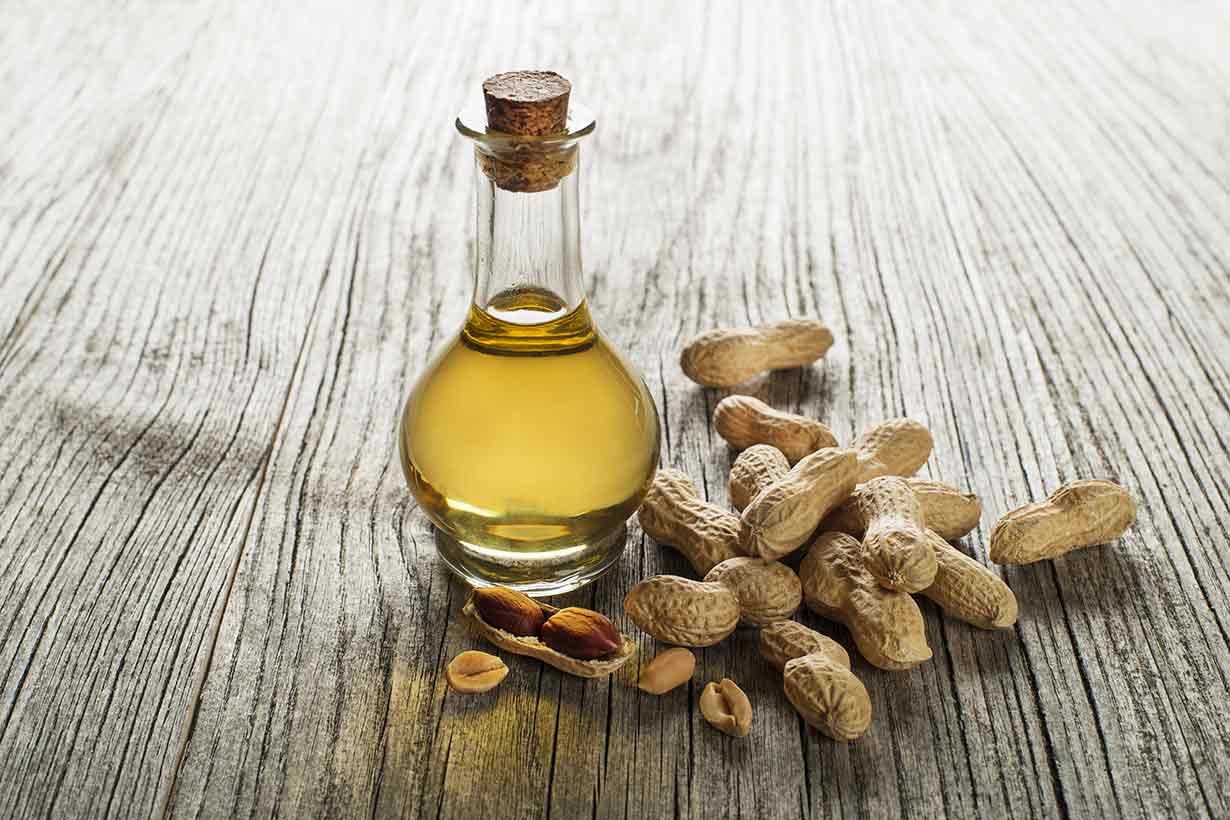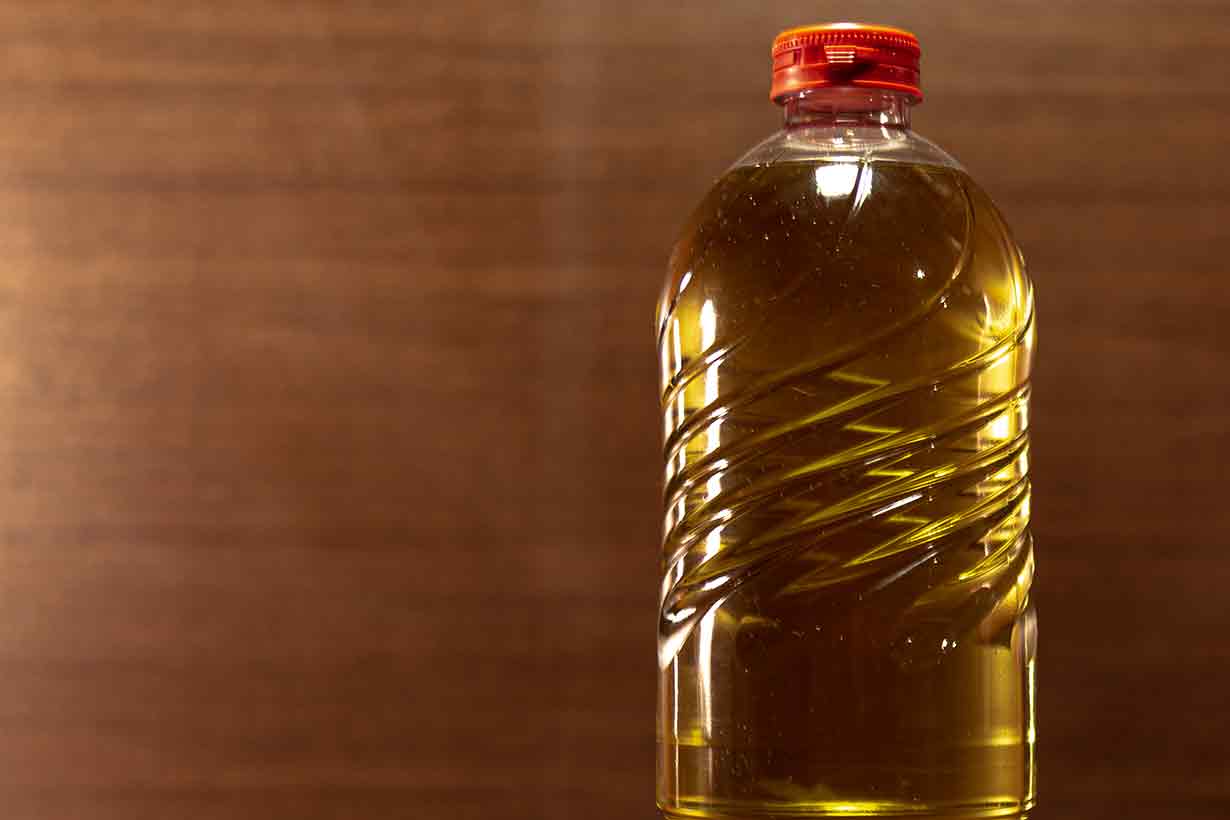Canola oil is one of the most popular cooking oils in the world.
Sometimes we can hear people refer to canola as a “heart-healthy oil” due to its high unsaturated fat content.
However, it’s also possible to find people questioning canola’s health properties, which is particularly common on social media.
What is the truth?
This article takes an objective look at the issue and examines what existing scientific research has to say.
What Is Canola Oil?

Canola oil is derived from the seeds of certain varieties of rape plant (Brassica napus) bred to contain low concentrations of erucic acid (1).
In some parts of the world, canola oil is referred to as ‘rapeseed oil,’ and the first rapeseed oils were introduced in the 1950s.
However, these oils contained high concentrations of a monounsaturated fatty acid called erucic acid, which could be anything up to 40% by weight (2).
Based on rodent studies, it was subsequently discovered that high concentrations of erucic acid had a potentially damaging effect on the heart (3).
Out of safety concerns, these initial rapeseed oils were removed from the market, and subsequently, rape plants were bred to produce low-erucic acid seeds.
At present, canola oil sold within the United States is regulated by the FDA and must contain no more than 2% erucic acid by weight. According to the European Food Safety Authority (EFSA), rapeseed oil for sale as food generally contains less than 0.5% erucic acid (2).
In small amounts, erucic acid is common in several other popular foods, with mustard being a notable example (4, 5).
Where Does the Name Canola Come From?
There is no such thing as a canola plant, so why the name ‘canola’?
Firstly, the first low-erucic acid rapeseed oils were produced in Canada in 1970, and a trademark for the oil was set up by the Rapeseed Association of Canada (6).
This trademark was ‘canola’ – the ‘CAN’ stood for Canada, and ‘OLA’ is a variation on the word oil; thus, canola stood for Canada oil.
However, ‘canola oil’ is now used in many countries as a generic name for rapeseed oil, with the United States being a notable example.
In other countries, such as the United Kingdom, the oil is sold under the name ‘rapeseed oil.’
How Is Canola Oil Made?
There are two different production methods used to make canola oil, and which one depends on the type of oil:
- Cold-pressed
- Refined, bleached, and deodorized
The vast majority of canola oil is refined, bleached, and deodorized, otherwise known as an RBD oil.
However, let’s take a look at how the two varieties compare.
Cold-pressed
Cold-pressed oil can be produced by mechanically squeezing rape seeds in a piece of machinery known as an expeller press.
The initial oil produced from squeezing these seeds is referred to as cold-pressed canola.
For a deeper exploration of the cold-pressing procedure, there is an in-depth guide to the process here.
Following cold-pressing, the remaining seed solids may then go through a refining process to extract further oil.
Refined, Bleached, and Deodorized
The refining, bleaching, and deodorizing process involves the following steps:
- First, rapeseeds are heated and then crushed with rollers.
- Following this, the seeds are again heated before passing through screw presses to extract the oil.
- After the pressing, solvents are used to unlock any oil remaining in the leftover solids. Hexane is a commonly used solvent for this purpose, and it filtrates the seeds and removes the oil.
- The recovered oil then undergoes further refining to remove the solvents and any impurities. After this, a further filtering (bleaching) and deodorization process remove leftover unwanted compounds and odors from the oil.
As the refining process is much more efficient than cold-pressing, it is generally favored by canola oil producers.
On the slightly negative side, the deodorization process introduces a (small) amount of trans fats into the oil (7).
According to the USDA, canola oil contains approximately 0.4 grams of trans fat per 100 grams (8).
However, this is not unique to canola oil, and it is the same for any refined oil.
Nutritional Values
You can find the basic nutritional values for canola oil per tablespoon serving and per 100 grams in the table below.
The source of the data is the USDA’s FoodData Central database (8):
| Name | Amount per tbsp (14g) serving | Amount per 100 grams |
|---|---|---|
| Calories | 124 kcal | 884 kcal |
| Carbohydrates | 0 g | 0 g |
| Fat | 14.0 g | 100.0 g |
| Saturated | 1.03 g | 7.36 g |
| Monounsaturated | 8.86 g | 63.3 g |
| Polyunsaturated | 3.94 g | 28.1 g |
| Omega-3 | 1.28 g | 9.14 g |
| Omega-6 | 2.61 g | 18.6 g |
| Trans Fat | 0.06 g | 0.4 g |
| Protein | 0 g | 0 g |
As shown in the nutritional values, canola oil is very high in monounsaturated fat, with a moderate amount of polyunsaturated fat and relatively small amounts of saturated fat.
Compared to other popular oils, such as soybean oil, canola is much lower in polyunsaturated fat and higher in monounsaturated fat.
However, compared with olive oil, it contains more polyunsaturated fat and less monounsaturated fat.
Vitamins and Minerals
Generally speaking, cooking oils are poor sources of vitamins and minerals, and the same is true with canola oil.
However, a tablespoon serving provides small amounts of the following nutrients (8):
- Vitamin E: 2.44 mg (16% of the daily value)
- Vitamin K: 9.98 mcg (8% of the DV)
What Is the Smoke Point of Canola Oil?
The smoke point of canola oil has been reported as ranging from 220°C (428°F) to 238°C (460°F) (9, 10).
For those unaware, the smoke point refers to the temperature at which the oil will break down and start to smoke. At this point, the fat will start to burn and produce progressively more smoke.
However, the smoke point of cooking oil is not the only consideration in this regard.
For instance, different oils have varying degrees of oxidative resistance. As fatty acids in fat oxidize, they generate breakdown products such as polar compounds and free fatty acids (11).
These polar compounds, such as aldehyde, are thought to be potentially harmful to human health via potential negative impacts on lipid metabolism and oxidative stress (11, 12, 13).
Interestingly, a particular fat source’s smoke point appears to decrease as its free fatty acid content increases (11).
For this reason, we cannot judge the performance of cooking oils based on smoke points alone, and the oil’s oxidative stability also needs to be considered.
Does Canola Oil Have Any Benefits?
There are lots of opinions about canola oil, both positive and negative.
Thus, we should be looking for objective data from human randomized controlled trials when looking at its potential benefits.
Here is a summary of systematic reviews, meta-analyses, and randomized controlled trials that demonstrate benefits from canola oil intake.
- In participants with type 2 diabetes, adding 30 grams of canola oil to their diet each day for 30 days significantly decreased C-reactive protein (CRP) levels, which is a marker of inflammation (14).
- A systematic review and meta-analysis of randomized controlled trials demonstrated that canola oil significantly lowers LDL cholesterol levels despite having no effect on HDL (15).
- In a randomized controlled trial, 96 participants with high cholesterol were followed for six months after replacing saturated fat with either canola oil or sunflower oil. Compared to baseline, after six months, LDL-C and triglyceride levels were significantly lower, and HDL-C was slightly higher (16).
- A recent systematic review and meta-analysis of forty-two clinical trials found that canola oil reduces LDL-C and total cholesterol without affecting HDL levels. Also, canola oil improved traditional cardiovascular risk markers more than sunflower oil, olive oil, and saturated fats. There was no impact on markers of inflammation (17).
Among the various studies, the fairly consistent effect that we can see is that canola oil consistently lowers LDL-levels without also lowering HDL.
Based on these results and the consensus stance that higher LDL levels are a risk factor for cardiovascular disease, canola oil intake appears to lower cardiovascular risk (18).
Does Canola Oil Have Any Downsides?
Perhaps the biggest concern about canola oil is the degree of oxidative stability it has. In plain English, this means how susceptible the oil is to breaking down/degrading at high heat temperatures.
Here is a summary of research investigating the oxidative stability of canola oil:
- In a study investigating the oxidative stability of cooking oils under deep-frying conditions, canola oil degraded more significantly. It generated more polar compounds over 60 hours than high-oleic soybean oil and safflower oil (19).
- A large study compared popular cooking oils, including extra virgin olive oil, virgin olive oil, olive oil, grapeseed oil, avocado oil, coconut oil, sunflower oil, rice bran oil, peanut oil, and canola oil. This study tested each oil’s oxidative stability at various cooking times and temperatures. The study found that canola oil degraded and generated more polar compounds than any other oil when heated over 200°C (392°F). When heated to a temperature of 240°C (464°F) over just 20 minutes, canola oil had a total polar compound level of 27.5%, which is above the permissible limits (25%) for human consumption (11).
- In a study that used the same oil for frying potatoes for up to 28 hours, canola oil was compared to extra virgin olive oil and peanut oil. Based on a degradation limit of 25% total polar compounds, canola oil lasted for 20 hours before it had degraded to an unacceptable level, as did peanut oil. In contrast, extra virgin olive oil was still within this limit even after 28 hours of frying (20).
- Under short-medium term frying conditions in a kitchen, canola oil degraded slower and generated fewer oxidation products than soybean oil. These frying times ranged from 15 minutes to 120 minutes (21).
As seen in these studies, canola oil degrades and generates high polar compound levels at high-heat temperatures and when heated for extended periods of time. For regular home pan-frying at reasonable temperatures, this is unlikely to be an issue.
See this guide to seed oils for more information on the research into human health outcomes and the intake of seed-extracted oils like Canola oil.
Some Considerations When Cooking With Canola Oil
For those who prefer to use canola oil, what are some considerations when cooking with it?
Firstly, under stir-frying conditions, canola oil produced to have a higher canolol content appears to have increased oxidative stability compared to regular canola oil. Canolol functions as an antioxidant, and it is worth noting that unrefined (cold-pressed) canola oil has a higher canolol content (22, 23).
Secondly, high OLEIC varieties of canola have a much higher resistance to high-heat conditions than regular canola oil. ‘OLEIC’ refers to oleic acid, and high-oleic oils have similars level of oleic acid as extra virgin olive oil (24, 25).
Studies have demonstrated that high oleic canola oil generates relatively low total polar compound levels over the first 24 hours under frying conditions when exposed to heat (26).
Thirdly, the temperature is important. For instance, the study that showed canola oil to generate the most polar compounds out of common cooking oils when heated above 200°C over 20 minutes also examined the number of polar compounds generated at various temperatures.
While canola oil had a total polar compound level of 27.5% after 20 minutes at 240°C, the total polar compound level was only around 7% after 20 minutes of 150°C (302°F) (11).
How Does Canola Compare To Other Cooking Oils?
As shown in this article, canola oil tends to have a reliably consistent effect on lowering levels of LDL cholesterol, and this effect may appeal to some people.
However, as a refined and deodorized oil, it does also contain small amounts of trans fat.
Opting for a cold-pressed variety of canola oil, which doesn’t contain trans fat, can solve this issue for anyone holding concerns.
Several studies have shown that prolonged commercial frying can create unacceptable levels of oxidation products in canola oil. However, this should not be a concern with typical home use, providing that the temperature is controlled.
For those who want an oil that is more suitable for prolonged frying times or high-heat cooking, the various high-oleic options are worth investigating.
Extra virgin olive oil is another good choice in this regard, as it contains low levels of polyunsaturated fat, which is the most susceptible fat to oxidation. It also contains large numbers of polyphenols that help to protect against oxidation.
Here is some more detailed information on cooking with extra virgin olive oil.
Final Thoughts
People tend to have strong opinions about their favorite cooking oils, and it’s no different with canola oil.
Is it a healthy choice for cooking? The answer to that question probably depends on what each consumer is looking for.
For a commercial business exposing the oil to prolonged deep-frying conditions, perhaps there are better options.
For an individual looking for cheap and affordable cooking oil that lowers LDL, perhaps canola may tick the right boxes.








